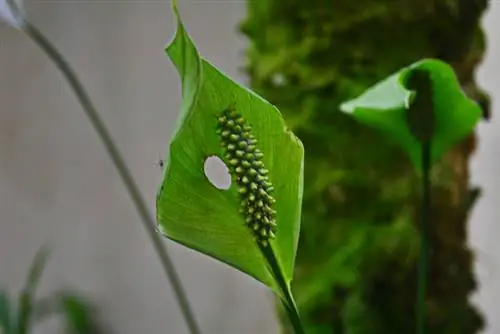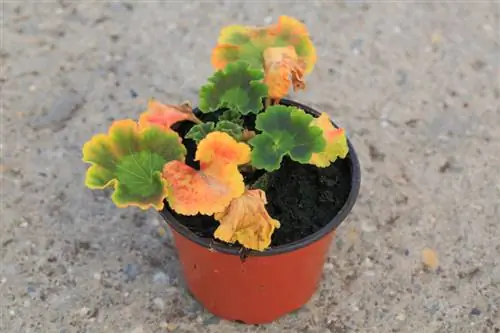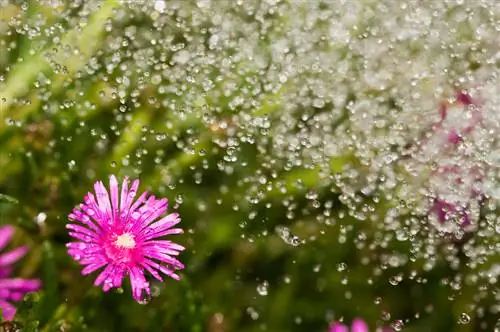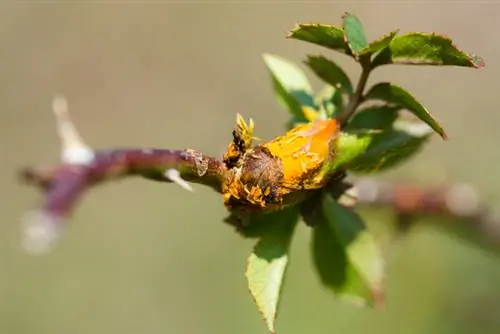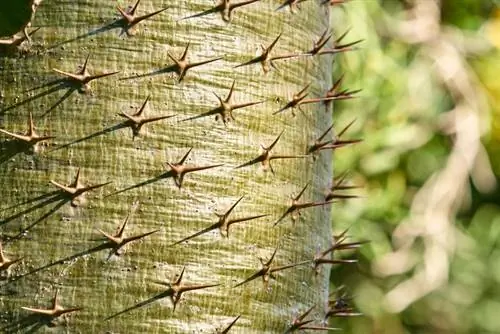- Author admin [email protected].
- Public 2023-12-16 16:46.
- Last modified 2025-01-23 11:20.
Beautiful to look at, easy to care for and extremely robust: it is not without reason that the single leaf (Spathiphyllum) is one of the most popular houseplants. The distinctive plant with its large, green leaves and striking white bracts is at home in the tropical rainforests of Colombia and Venezuela and thrives there in the light shade of the jungle giants. In home care, the leaflet forgives many mistakes, but sometimes it also reacts with diseases or pest infestation.
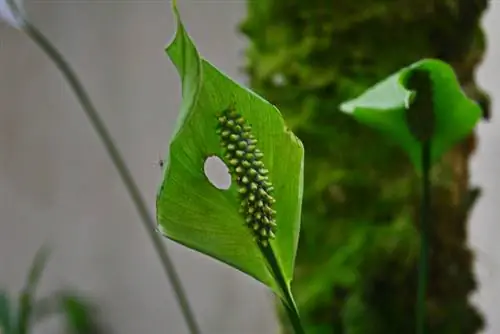
What diseases occur in single-leaf plants?
Single-leaf diseases usually appear as brown or yellow spots on the leaves, which can be caused by air that is too dry, lack of water, waterlogging or over-fertilization. Yellow spots or dots are typical for spider mite infestations.
Brown leaves have different causes
The single leaf often reacts to serious care errors with the leaves turning brown. Depending on how this coloring manifests itself, there is a different cause behind it.
Brown leaf tips
For example, if only the tips of the leaves turn brown, the air is simply too dry. Spathiphyllum is a rainforest plant and as such is used to humidity between 70 and 100 percent. We usually won't achieve these values in our apartment, but the plant still needs more moisture. So you can do your one-leaf some good by spraying it with warmed rainwater or stale tap water from time to time. However, you should leave out the flowers, otherwise they can turn an unsightly brown color.
Brown leaves
Completely brown, drying leaves can have two causes: either the plant dries up due to lack of water or it dies of thirst because its roots rot due to persistent waterlogging. A lack of water can be quickly remedied by watering the plant thoroughly. Root rot, on the other hand, requires immediate repotting and cutting back the damaged parts. Brown spots or dots on the leaves are a clear sign that you have over-fertilized your one-leaf. In this case too, the plant should be moved to fresh substrate and fertilized less in the future.
Yellow spots or dots
Infestation with spider mites often occurs, especially in warm and dry indoor air. These tiny, leaf-sap-sucking animals are difficult to see with the naked eye, which is why an infestation is often only discovered when it is already well advanced. A sign of a spider mite infestation is yellow spots or dots on the leaves. You can prevent these pests by maintaining high humidity.
Leaf spot disease
Mostly dark brown, ring-shaped spots with a light edge and wilting lower leaves are an indication of the so-called leaf spot disease. In this case, the only thing that helps is to remove the infected leaves; if the infestation is severe, the entire plant may even have to be disposed of.
Tip
Check the substrate regularly for mold growth and replace it if necessary.

